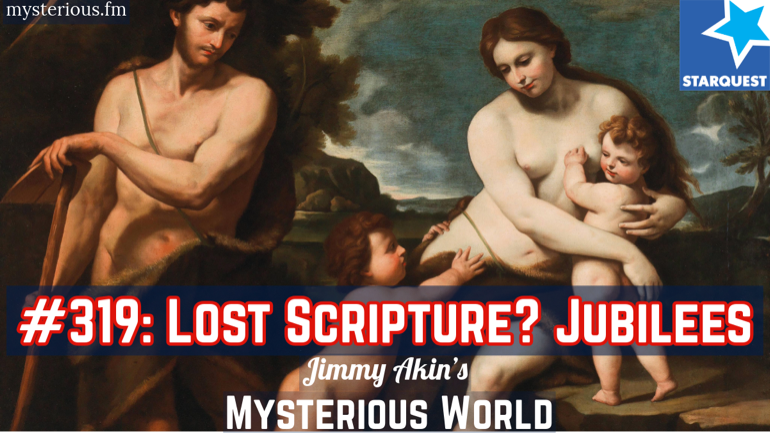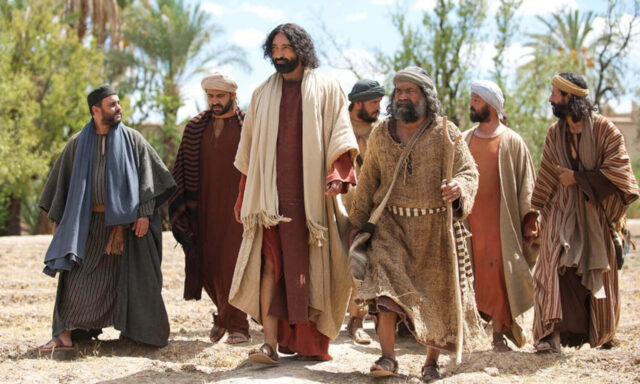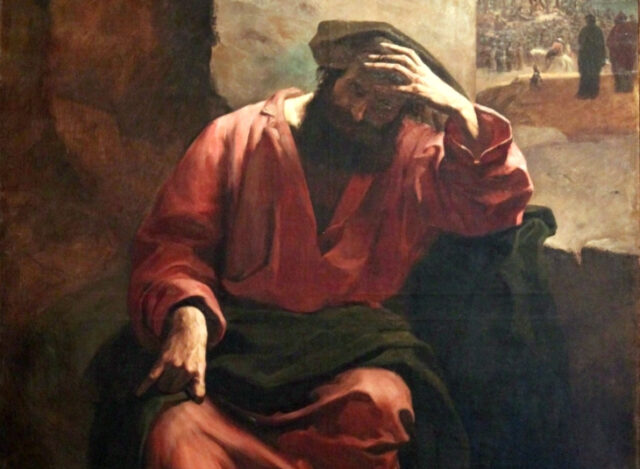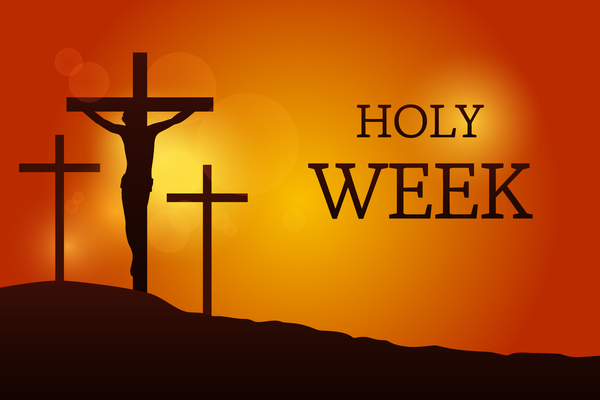Some Christians appear to believe that the Bible contains nothing but exact quotations of the people it describes. In other words, everything you see between quotation marks in the Bible is exactly what the person said. There’s not one word of difference.
It’s easy for modern Christians to think this since we live in a world of audio and video recorders and stenographers and transcriptionists. Exact quotations come easy to us.
However, the attitude of ancient audiences was different. They lived before any recording devices had been invented, few people were literate, and of those who were literate, only a very few were trained in stenography and capable of taking down exactly what someone said in real time.
As a result, they did not expect exact quotations the way that we do. Instead, they expected texts to convey the gist or basic meaning of what someone said, but not the exact words.
They also recognized that authors would, at times, need to reconstruct the dialogue or conversations that people had.
No Recording Devices
Think about it: Without recorders and transcribers of such conversations, how would anybody remember exactly what had been said on a particular occasion? They might remember the gist of what was said, but likely not the exact words—especially after a long space of time.
Of course, in divinely inspired texts like the books of the Bible, God could reveal the exact words that had been used on a particular occasion. That’s possible. But it’s not what the ancient audience was expecting. They were used to reading books of history that used the convention of reconstructed dialogue, and so that’s what they would have assumed books of Scripture also contained—unless the text said otherwise.
A key principle of good biblical exegesis is reading the text the way the ancient audience would have, and so we also should understand the Bible as using reconstructed dialogue. We should not introduce the added assumption—not shared by the original audience—that God miraculously revealed what was said by minor players in the narrative, like the exact words used by every person who approached Jesus for a miracle.
Nobody would have written down the exact words of a healing request at the time, but the gist would have been remembered (e.g., a blind man asked Jesus for his sight back), and so we would expect the exact words to be reconstructed.
This much we can establish based on a knowledge of how ancient literature worked, but can we find evidence supporting this view in the text itself?
We can! And one way we can do this is by comparing different accounts of the same incident.
Synoptic Parallels
Let’s compare Mark’s and Matthew’s account of what the demons said to Jesus in the case of the Gerasene/Gadarene demoniacs.
Mark 5 presents us with Jesus exorcizing a single demoniac, and we read of the following exchange taking place between Jesus and the demons.
And pay particular attention to the words of the demons, because we’re going to compare them.
“What have you to do with me, Jesus, Son of the Most High God? I adjure you by God, do not torment me.”
For he had said to him, “Come out of the man, you unclean spirit!”
And Jesus asked him, “What is your name?”
He replied, “My name is Legion; for we are many.”
And he begged him eagerly not to send them out of the country. Now a great herd of swine was feeding there on the hillside; and they begged him, “Send us to the swine, let us enter them” (Mark 5:7-12).
Now here’s the account of the same event from Matthew 8, where Matthew records that there were two demoniacs that Jesus exorcized:
“What have you to do with us, O Son of God? Have you come here to torment us before the time?”
Now a herd of many swine was feeding at some distance from them.
And the demons begged him, “If you cast us out, send us away into the herd of swine” (Matt. 8:29-31).
As you can see, Matthew omits the reference to “Legion,” but the gist is the same in both accounts—the demons ask what Jesus has to do with them, they’re concerned about being tormented, and they ask to go into the herd of pigs.
But the exact words used are different. In Mark the demons say, “What have you to do with me” (singular), because Mark is only mentioning one demoniac, while Matthew has “What have you to do with us” (plural), because Matthew mentions the second demoniac.
In Mark the demons identify Jesus as “Jesus, Son of the Most High God,” while in Matthew they just identify him as “Son of God.”
In Mark the demons make a request about torment—“I adjure you by God, do not torment me”—while in Matthew they ask a question—“Have you come here to torment us before the time?”
Finally, concerning the pigs, Mark’s demons make a simple request—“Send us to the swine, let us enter them”—while in Matthew they make a conditional request—“If you cast us out, send us away into the herd of swine.”
We thus see how the biblical authors Mark and Matthew both wanted to convey the gist of what happened on this occasion, but they don’t feel bound to use the same exact words of dialogue. There is dialogue reconstruction—in the form of paraphrase—happening in these texts.
A More Striking Example
An even more striking example of reconstructed dialogue occurs in Luke’s account of the day of Pentecost in Acts.
After the Holy Spirit descends on the disciples and they begin speaking in tongues, we read:
Now there were dwelling in Jerusalem Jews, devout men from every nation under heaven. And at this sound the multitude came together, and they were bewildered, because each one heard them speaking in his own language.
And they were amazed and wondered, saying,
“Are not all these who are speaking Galileans?
“And how is it that we hear, each of us in his own native language?
“Parthians and Medes and Elamites and residents of Mesopotamia, Judea and Cappadocia, Pontus and Asia, Phrygia and Pamphylia, Egypt and the parts of Libya belonging to Cyrene, and visitors from Rome, both Jews and proselytes, Cretans and Arabians, we hear them telling in our own tongues the mighty works of God” (Acts 2:5-11).
Note carefully what Luke says: “they were amazed and wondered, saying.” This tells us that the words that follow represent what the crowd—a group of people—said.
Now—unless they’re chanting in unison—when a group of people speak, each person says something different. In real life, they would hold a conversation about the amazing event unfolding before them.
But instead of recording a conversation between individual speakers, Luke represents the crowd as if it is speaking in unison: “How is it that we hear, each of us in his native language? . . . We hear them telling in our own tongues the mighty works of God.”
Interposed between these is a long list of places that the Jews came from, and there is no way in real life that a group of people speaking in unison—without a script—would name the same places in the same order.
What’s more, the list isn’t random. This may not be obvious to modern readers, who aren’t that familiar with ancient place names, but the list mentions places of Jewish settlement moving from east to west. It starts in the far east with Parthia (in modern Iran) and works its way westward through the Holy Land and North Africa before moving up to the capital of the empire—Rome—with Cretans (an island people) and Arabs (a nomadic people) thrown in at the end.
There is no way a crowd would spontaneously come up with this list. If they wanted to speak in unison, they’d need to first decide on the places to name and then figure out the sequence in which to name them.
A Greek Chorus
The way that Luke presents the crowd bursting into a common speech will be familiar to readers of ancient literature. What Luke depicts the crowd doing is functioning as a Greek chorus.
Greek choruses were made up of performers in ancient Greek plays. Choruses consisted of 12 to 50 actors, and they sang, danced, and spoke lines in unison. Their purpose was to represent the common people who were witnessing the events of the play, and they provided commentary on them.
They would say things that the main characters couldn’t (e.g., the chorus might comment on the main character’s faults or hidden fears and motives), they would comment in ways that would bring out the significance of events in the story, and they would underscore elements of the plot to make it easier for the audience to follow.
Here’s an example of a chorus speaking in Sophocles’s play Antigone—about the daughter of Oedipus the king. At this point in the play, Antigone has been sentenced to be buried alive in a tomb by the tyrant King Creon, and she has just compared her fate to a somewhat similar fate experienced by Niobe, the daughter of King Tantalus.
The chorus then speaks up and says:
Yet [Niobe] was a goddess, you know, and born of gods;
we are mortals, and of mortal race.
But ’tis great renown for a woman [you, Antigone] who has perished that she should have shared the doom of the godlike, in her life, and afterward in death.
You see how the chorus speaks in unison—“We are mortals, and of mortal race.” This kind of speaking in unison would not happen in real life unless people were reading from a script, which is exactly what happened in ancient Greek plays. The actors had a script to direct their speech.
The crowd on Pentecost had no script to read from, but Luke knows that his readers will have seen plays and be familiar with the literary device of a chorus, so he reconstructs dialogue-in-unison to reflect the thoughts and nature of the crowd and has them provide commentary on the miracle they have just witnessed.
No doubt, individual people in the crowd on Pentecost did say things like, “Are not all these who are speaking Galileans?”, “How is it that we hear, each of us in his own native language?”, and “We hear them telling in our own tongues the mighty works of God.” They probably didn’t use those exact words, but they convey the gist of what people in the crowd said.
Luke then fuses these remarks with a list of the places that the people came from to provide an overall commentary that conveyed to his readers a sense of the multiple languages represented in the miracle and the crowd’s reaction to it.
We thus find a real event being presented with a particularly clear case of reconstructed dialogue.
The Words of Jesus
A question that modern readers will want to ask is what all this says about the words of Jesus.
We can say basically two things: First, that the authors of the Gospels were concerned with accurately presenting the gist of Jesus’ teachings and interactions, and second, that they were at liberty to paraphrase and reconstruct dialogue.
This means that we would expect more exact representations of Jesus’ words in certain types of passages. Teachings were the most important things Jesus said (as opposed, for example, to where the group would be having dinner or spending the night), so they should most closely reflect his actual words.
Short Sayings
Also, shorter statements are easier to remember than longer ones, so teachings given in shorter form should convey more of the actual words.
Indeed, we have evidence that Jesus himself took these things into account, and many of his teachings are framed in short, vivid, easy-to-remember forms. An example is this statement:
The last will be first, and the first last (Matt. 20:16).
This saying uses a literary device known as a chiasm or chiasmus (in Greek chiasma means “crossing”). Chiasms involve a sequence of elements that reverse in order. If we label the word “last” as A and the word “first” as B, this chiasmus has an A B | B A structure.
Such structures make sayings easier to remember, and it appears Jesus used them to make his teachings more memorable.
Parables
Another literary device he used to do this was the parable. Jesus’ parables are short, memorable stories that teach spiritual lessons, and humans are wired for stories, so we remember the gist of them easily.
Some of Jesus’ longer discourses—like the Sermon on the Mount (Matt. 5-7)—are essentially collections of short, easily memorable sayings, and if you study the Sermon on the Mount, you can see that it’s organized around different collections of sayings that begin the same way (e.g., “Blessed are the X”, “You have heard X, but I say Y”, “When you do X, do not do Y”).
There is also the fact that—as a teacher—Jesus would have given the same teachings multiple times, to many different audiences, so his disciples would have heard his teachings many times and—as his disciples (i.e., students)—they would have made efforts to memorize them so they could preach them to others.
Conversational Dialogue
On the other hand, not everything Jesus said would have been remembered in this way. Things he said only once—like when he was having a conversation with someone—would not be expected to be as close to the original wording, so we would expect more reconstruction in one-off statements.
The same would be true of minor characters—people other than Jesus. Numerous people approached him for miracles of healing or exorcism during his ministry, and their exact words in making the request would not have been memorized. Consequently, we would expect the Evangelists to reconstruct what such people said, basing it on the kind of thing someone with a particular problem would say to Jesus in making a respectful request for relief.
So expect more reconstruction in conversational dialogue.
Long, One-Time Speeches?
Similarly, things that Jesus said that went on for a long time—very lengthy statements, especially those made only once—would be harder to memorize, and we would expect more paraphrase and reconstruction.
For example, Jesus gives some long speeches in the Gospel of John. One of them runs for five chapters (John 13-17)! And it was apparently given only once, on Holy Thursday. Even though John was an eyewitness (John 21:24), and even though he had supernatural assistance in remembering what Jesus said (John 14:26), the ancient audience would not have expected John to reproduce a word-for-word transcript of a lengthy speech he heard Jesus give only once.
Instead, they would expect the Holy Spirit to help John remember the gist of what was said, and then John would employ the normal reconstruction and paraphrase that was expected in ancient literature.
What we see is thus that the four Evangelists felt the need to accurately preserve the substance of what Jesus said, but not always the exact wording—as can be seen by comparing the Gospel accounts of the same sayings and noting the variation in the exact words used.
No Quotation Marks
Part of the problem modern readers have with the idea that quotations in the Bible may not be exact is because they are encased in quotation marks. When Jesus says something, modern Bibles put quotation marks around it.
However, the original Greek manuscripts of the New Testament (and the Hebrew manuscripts of the Old Testament) do not contain quotation marks. They are a later invention.
The ancestors of quotation marks were invented in the 2nd century B.C., but they had a different function back then. At the Library of Alexandria, they were used to signal erroneous or disputed portions of text.
Once the Christian age began, authors began using them to signal quotations, but they were a particular type of quotation—one that came from the Bible. Biblical passages would get quotation marks, regardless of whether someone was speaking or not. Thus when the author of Genesis writes “In the beginning, God created the heavens and the earth,” it would get quotation marks, and so would Jesus’ statement “The last will be first, and the first last.”
Later, quotation marks came to be used for quotations of the words another person used in saying something, which is their modern function. And they usually indicated exact quotations—the exact words someone said, with no paraphrase or reconstruction.
This is the connotation that they have today, and their use in modern editions of the Bible leads the reader to suppose that they are being given an exact quotation.
But the quotation marks aren’t in the originals. They are added by modern translation committees. There are even disputes—in some cases—about where a particular quotation begins and ends, because there aren’t any marks in the Greek telling you where it ends and where the author’s voice picks up again.
For example, a famous instance occurs in Galatians 2. It’s clear that in Galatians 2:14 Paul begins quoting something he once said to St. Peter, but it isn’t clear where the historic quotation ends and where Paul shifts back to giving his current thoughts rather than what he said to Peter in the past.
Direct and Indirect Discourse
The difference in how ancient writers quoted people and how modern, English-speaking ones do is illustrated by the difference between what are known as direct and indirect discourse.
In direct discourse, a modern English-language writer will be giving you what he believes were the exact words a person used—no paraphrasing allowed—as in this statement:
-
- John said, “I am hungry”
By contrast, indirect discourse doesn’t present you with a quotation, and so quotation marks are not used, as in the statement:
-
- John said that he is hungry.
The way English writing works, you know that in the first statement the author is giving you what he thinks is an exact quotation of what John said, while in the second statement he is giving you a summary of what John said, but not necessarily his exact words (e.g., John might have literally said, “I’m famished!” or “I’m peckish” or “I haven’t eaten today,” but you could summarize all of those with “John said that he is hungry”).
Greek has equivalents of direct and indirect discourse, but they don’t work exactly the same way the English versions do. In particular, since ancient authors generally weren’t expected to give you exact quotations, this wasn’t normally part of what Greek direct discourse implied.
But when you add quotation marks to signal direct discourse in English, it tells the reader that what they have before them is supposed to be an exact quotation. This can mask the greater flexibility ancient authors had in presenting quotations. So when you read the statement:
-
- And Jesus said to the centurion, “Go, as you have believed it will be done for you.”
It may actually mean something more like:
-
- And Jesus said to the centurion that he should go and that, as he had believed, it would be done for him.
In other words, quotation marks work differently in the Bible than they do in things we write.
When you see quotation marks in the Bible, they only guarantee that the gist of what was said is accurate—not that these were the exact words.
This is not to say that a quotation doesn’t preserve the exact words of Jesus. It may or may not, but it will accurately preserve the gist of what he said.
Dei Verbum
So what can we say in light of all this? One of the things that the Second Vatican Council taught was the following:
Since, therefore, all that the inspired authors, or sacred writers, affirm should be regarded as affirmed by the Holy Spirit, we must acknowledge that the books of Scripture, firmly, faithfully and without error, teach that truth which God, for the sake of our salvation, wished to see confided to the sacred Scriptures (Dei Verbum 11).
In other words, everything that the authors of the Bible intended to assert, properly speaking, is also asserted by the Holy Spirit and is thus true.
The authors of the Bible intended to assert the substance of Jesus’ actions and teachings. They didn’t intend to assert the exact words that he and others always used, because that kind of assertion wasn’t a standard part of ancient literature. However, they did intend to assert the gist—the substance—of what he said and did.
Therefore, that substance is guaranteed by the Holy Spirit to be transmitted by the Gospels “firmly, faithfully, and without error.”
* * *
If you like this content, you can help me out by liking, commenting, writing a review, sharing the podcast, and subscribing
If you’re watching on YouTube, be sure and hit the bell notification so that you always get notified when I have a new video
You can also support the podcast by going to Patreon.com/JimmyAkinPodcast
Thank you, and I’ll see you next time
God bless you always!








